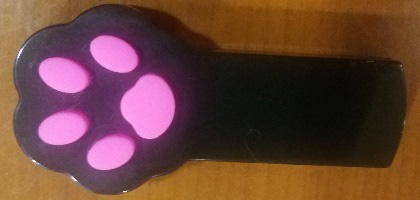3.3 Laser Pointers – Are They Safe or a Public Health Problem?
Introduction
In recent years, numerous papers have been published, reporting ocular injuries following laser pointers exposure, challenging their classic notion of safety.1-5
The vast majority of cases involves children or young males with direct or mirror-reflected laser trauma.2,4
The increase of this incidents may be related to laser pointers being cheap, easy to buy and used for recreational purposes.6
In parallel, a significant increase in intentional laser exposures at sports and aviation events has been reported.6,7
As an example, in 2014 the US Federal Aviation Administration reported three thousand nine hundred and nighty-four laser-related incidents, even though sanctions and rewards to informants have already been implemented.7
A major risk factor for the misuse of laser pointers is the general lack of knowledge of younger people (children and teenagers) that often manipulate them.
However, this lack of knowledge is not exclusive to this age group, involving even the medical doctors class, theoretically more enlighten.
Recently Alsulaiman et al published a paper based on a questionnaire directed towards physicians of several medical specialties and orthoptists stating that two-thirds of the enquired population used laser pointers.
Of these, 82% didn’t know the power of the laser pointer they used and 90.7% were even unaware what the laser power safe limit was.8
This lack of knowledge is probably influenced by the geographical disparities regarding laser classification systems.
The output power of laser pointers must not exceed 5mW in the visible spectrum (400-700nm), corresponding to class IIIa (Code of Federal Regulations or commercial class 3R (American National Standards Institute).9,10
In Europe, laser classification is determined by the International Electrotechnical Committee, that generates European Standards. In Portugal laser pointers are defined by the European Standard EN 60825-1:1994 (with changes introduced by EN 60825-1:1994/A11:1996 and EN 60825-1:1994/A2:2001) (Figure 1).11
An important difference exists regarding the definition of class 3A: in addition to the output power not exceeding 5mW, the maximum level of irradiance must be 25W/m2.12
This subtle but important difference might imply that a class IIIa laser in the USA may be a class 3B in Europe.
Both class 3B and class IV have a known risk for ocular damage, even with short exposure time, and hence are not considered safe outside the scope of medical treatments/other specific uses.

Figure 1 – class 2 laser pointer (635-670nm), with correct labeling.
In Portugal, the sale of laser pointers is limited to persons over 18 years old with proper identification and the buyer is obliged to sign a term of responsibility.11
Nowadays most lasers are produced at low-cost facilities in Asian countries using the American classification but are sold on the internet (figure 2) without any limitations or control throughout Europe.
Thus, it is easy to understand that laser safety specificities are often not fully fulfilled.

Figure 2 – laser pointer (“cat toy”) without any labeling.
Moreover, recent studies have pointed out that many of the laser pointers that are bought in the unregulated market have no labeling or are labeled incorrectly.9,12
Moseley et al examined 30 laser pointers apprehended by the Scottish Police and discovered that 28 of them (93%) were European class 3B and three of them were even American class IIIb, i.e., with output power exceeding 5mW.
The maximal irradiance measured in this study was 242W/m2, almost ten times the maximum value allowed for class 3A.12
In another study Hadler et al analyzed 122 laser pointers classified as class 3R, concluding that 90% of the green pointers and 40% of the red ones did not meet their class specifications, exceeding their limits.
The authors concluded that there is a high probability that a laser pointer classified as 3R be in fact a class 3B laser, unsafe for domestic manipulation.9
Another emerging danger is related to the appearance of “high power” or “military” laser pointers, that can be used for “recreational” purposes (fire lighting, balloon popping, etc), which goes against the Public Health England orientations.
The latter recommends that laser “toys” should be at utmost class 2 (output power up to 1mW).1,7,9,10
High power laser pointers are green with wavelengths of 540nm, very close to the peak of photopic retinal sensibility and output power exceeding 2000mW.
Alternatively, there are also blue laser pointers with output power exceeding 6000mW.10
The extremely high output powers in association with the refractive properties of the cornea and the lens that per se may induce an increase up to 105, in the irradiance of the optic radiation crossing the eye, explain why it is easy to exceed the maximum permissible exposure level, meaning these “toys” are potentially very dangerous.13
Moreover, in Portugal, it is illegal that laser pointers are labeled as “toys”, according to the Decree-law 163/2002, from 11th July: “… cannot be integrated into objects whose appearance induces, or is likely to induce consumers to change the use they were initially designed for, particularly making them appealing for children and susceptible to be confused for a toy”.11
Laser and ocular injuries
Lasers can induce retinal lesions through three different laser-tissue interaction mechanisms: photothermal, photochemical and mechanical.7
The location of the lesions independent on the wavelength.
The type of lesion depends on laser parameters (such as exposure time, output power, spot size and pulse duration) and on eye parameters (pupillary diameter, eye transparency, blink rate and type of fixation).7,12-14
Lesions can be mono or binocular.
Exposure to a laser beam can induce dazzle, “after-image” formation, glare and/or visual acuity disturbances.
Those can be preceded or occur simultaneously with the earing of a “popping” sound.
Ocular pain, redness or eye irritation are not direct effects of laser exposure.1,13
Younger children and adolescents often delay verbalizing their ophthalmological complaints since they might be unaware the symptoms are related to laser exposure and also as they might be afraid of assuming that they had a laser incident.1,15
This leads to increased difficulties in diagnosing laser injuries in children. In addition, the absent or decreased notion of danger in this age group enhances beam fixation rather than avoiding it, which can lead to more severe eye injuries.
Thus, it is mandatory that clinical evaluation includes an exhaustive clinical history and a thorough eye examination with special attention to central vision (Amsler Grid/other).6
A fundoscopic evaluation may reveal a wide range of changes, such as perifoveal drusenoid like deposits/pigment clumps, foveal granularity, ring-shaped hypopigmentated foveal lesions, hemovitreous and retinal haemorrhages.3,13
In addition, macular hole, epiretinal membrane, choroidal neovascularization and retinal pigment epithelium (RPE) scars have been reported, both during the acute and the delayed stages of retinal laser injuries.1,5,16,17
Visual prognosis runs parallel with the type and severity of eye injuries.
Robertson et al revealed in a clinical pathologic study, electron microscopy alterations consisting of photoreceptors’ external segments vacuolization, loss of microvilli in RPE cells, abnormally shaped pigment granules, the presence of lipofuscin and granule dispersion.
These findings correlate with changes observed in structural optic coherence tomography (OCT).18
Structural OCT is mandatory in the evaluation and follow-up of these patients.
Recently, Raoof et al have presented a classification for laser retinopathy based on 24 eyes studied with OCT:
1) mild, associated with better prognosis, when one observes focal retinal disruption confined to the photoreceptor and ellipsoid layers;
2) moderate, when one observes diffuse retinal disruption confined to the outer retinal layer and
3) severe, associated with the worst prognosis, when one observes subfoveal outer retinal architecture loss and overlying hyper-reflective material in inner retinal layers.15
At the beginning of 2017, Tomasso et al using OCT angiograph (OCT-A) described hypointense lesions in the choriocapillary segmentation in correspondence of the focal hyperreflectivity detected on structural OCT of a subject.
They hypothesize that the OCT-A findings could represent a rarefaction of the choriocapillaris, which could be an indicator that retinal laser injuries are not limited to the RPE.19
Regarding other ancillary tests, multifocal electroretinogram and microperimetry may reveal focal alterations2,4,17
Fluorescein angiography may reveal an absence of alterations or early areas of hypofluorescence with late leakage.16
Indocyanine angiography may reveal foci of choroidal nonperfusion in the affected area, which reinforces the previously mentioned OCT-A findings.3,19
With the exception of specific injuries like a macular hole, the only available treatment is oral corticosteroid therapy, that has shown limited efficacy.2
Conclusions and take-home messages
All lasers should be carefully manipulated only by trained personnel, who can be accountable for their actions.
When properly used, laser pointers class 2 or 3A (European) are safe, based on blink reflex and visual aversion.
The red color is safer than green or blue colors since it is further away from the peak of retinal sensibility, inducing a more effective and faster defense reaction.
In order to ensure a diagnosis of laser retinopathy, a high degree of suspicion and a thorough clinical evaluation complemented with at least a structural OCT is mandatory.
One should never forget that laser incidents might have important medical-legal implications.
Children are a specific age group lacking the maturity to understand that lasers might be weapons even though they are sometimes presented as “toys”.
Thus, children should not be allowed to manipulate any kind of external lasers.
It urges that Government and other entities create efficient awareness programs of this emerging public health issue.
In addition, tighter legislation and monitoring of laser sales needs to be implemented.

